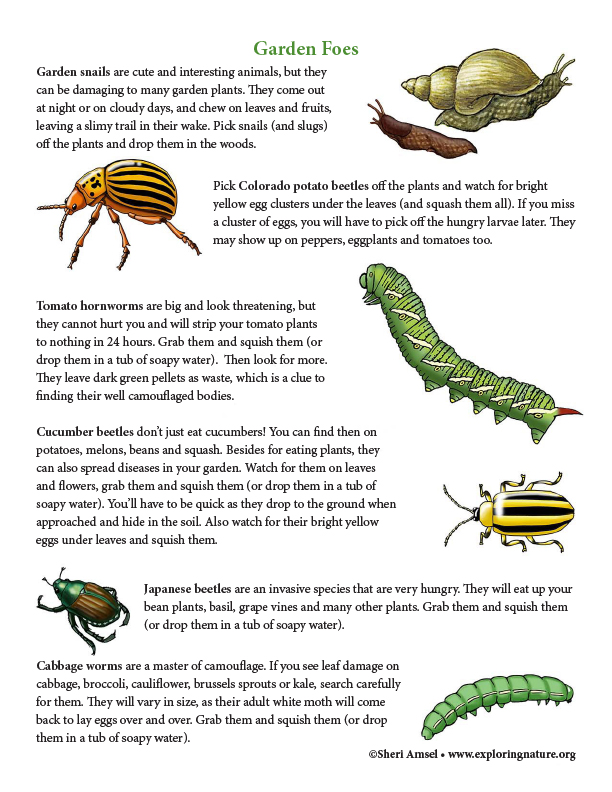

Here are a few garden pests to watch for in the garden and how to get rid of them without using pesticides.
Cabbage worms are a master of camouflage. If you see leaf damage on cabbage, broccoli, cauliflower, brussel sprouts or kale, search carefully for them. They will vary in size, as their adult white moth will come back to lay eggs over and over. Grab them and squish them (or drop them in a tub of soapy water).
Pick Colorado potato beetles off the plants and watch for bright yellow egg clusters under the leaves (and squash them all). If you miss a cluster of eggs, you will have to pick off the hungry larvae later. They may show up on peppers, eggplants and tomatoes too.
Cucumber beetles don’t just eat cucumbers! You can find then on potatoes, melons, beans and squash. Besides for eating plants, they can also spread diseases in your garden. Watch for them on leaves and flowers, grab them and squish them (or drop them in a tub of soapy water). You’ll have to be quick as they drop to the ground when approached and hide in the soil. Also watch for their bright yellow eggs under leaves and squish them.
Garden snails are cute and interesting animals, but they can be damaging to many garden plants. They come out at night or on cloudy days, and chew on leaves and fruits, leaving a slimy trail in their wake. Pick snails (and slugs) off the plants and drop them in the woods.
Japanese beetles are an invasive species that are very hungry. They will eat up your bean plants, basil, grape vines and many other plants. Grab them and squish them (or drop them in a tub of soapy water).
Tomato hornworms are big and look threatening, but they cannot hurt you and will strip your tomato plants to nothing in 24 hours. Grab them and squish them (or drop them in a tub of soapy water). Then look for more. They leave dark green pellets as waste, which is a clue to finding their well camouflaged bodies.
Try the Garden Pest Unscramble.
When you research information you must cite the reference. Citing for websites is different from citing from books, magazines and periodicals. The style of citing shown here is from the MLA Style Citations (Modern Language Association).
When citing a WEBSITE the general format is as follows.
Author Last Name, First Name(s). "Title: Subtitle of Part of Web Page, if appropriate." Title: Subtitle: Section of Page if appropriate. Sponsoring/Publishing Agency, If Given. Additional significant descriptive information. Date of Electronic Publication or other Date, such as Last Updated. Day Month Year of access < URL >.
Amsel, Sheri. "Garden Pests" Exploring Nature Educational Resource ©2005-2024. December 14, 2024
< http://www.exploringnature.org/db/view/Garden-Pests >
